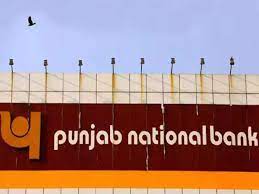PNB’s Q2 net profit increased by 327%, causing shares to jump 6%. Should you buy, sell, or hold?
As the state-owned institution released solid results for the July–September quarter, shares of Punjab National Bank (PNB) began to rise on October 27.
The public sector bank reported a 327 percent YoY increase in earnings, which is 51% lower than Street projections. The net interest income (NII) surge of 20% announced by PSU Bank exceeded the consensus expectation by 4%. Additionally, the bank recommended increasing net interest margin (NIM) in contrast to a contraction prediction.
PNB’s Managing Director (MD) and CEO, Atul Kumar Goel, told news agency PTI that the bank would become more profitable in the next quarters and that credit costs will decrease. According to him, the operational profit, net profit, and net interest income are the highest in the previous 14 quarters.
RAM (Retail, Agribusiness, and MSME sectors) will be PNB’s primary emphasis areas. During the current fiscal year’s first half (April to September), we made a profit of more than ₹3,000 crore. Goel told reporters, “I am hopeful that we will be able to maintain the same profitability in the third and fourth quarters.”
PNB said that its profit for the September quarter was Rs 1,756 crore, up from Rs 411.27 crore in the same period of the previous year. While gross non-performing assets (NPA) ratio decreased to 6.96 percent from 10.48 percent YoY, net interest income (NII), or the difference between interest received from lending operations and interest paid, increased to Rs 9,923 crore.
The stock has been rated as “outperform” by global brokerage CLSA, which has increased the target price to Rs 80 per share.
“We anticipate that the firm will continue to achieve a return-on-asset (RoA) of 0.4 percent in the second half of FY24, as they did in the first half of FY24. In a post-result review note, analysts said, “We upgrade pre-provision operating profit estimate by 4-9 percent for FY24/25.”
While net non-performing assets (NPA) decreased by 232 basis points (bps) to 1.4%, the lender’s gross non-performing assets (GNPAs) improved by a staggering 352 bps year over year to 6.9%.
One tenth of a percentage point is equal to one basis point.
“We expect PNB’s normalized return on assets (RoA) to stay below 1%, whereas all other competitors have either reached or surpassed 1%.” PAT is revised by 24% and 14% for FY24 and FY25, respectively. We retain “Reduce” as PNB’s profitability would continue to be lower than that of other state banks, but we raise the target price to Rs 50 (0.7 times BV) from Rs 45 (0.7 times BV) in response to better asset quality, according to Nuvama Institutional Equities.
PNB’s Q2 results, according to Motilal Oswal Securities, were stable as profits were driven by lower-than-expected charges while asset quality kept showing signs of recovery.
“Sequential NII growth was robust, bolstered by stable margins and robust growth in RAM sectors. With fewer slippages and good recoveries, asset quality kept getting better, and PCR even reached 80%. According to Motilal Oswal Securities, “SMA overdue is still under control at 0.16 percent of domestic loans, and the bank continues to guide for robust recoveries.”
The local brokerage claimed that it has stuck to its goal of Rs 75 and that by FY25, it expects to have a return on equity (RoE) of 9% and a return on asset (RoA) of 0.6%.
According to Kotak Institutional Equities, the bank’s return ratios have decreased due to increased provisions and, more recently, increased retirement-related expenses.
“The need for provisions is projected to reduce progressively as both new slippages and existing net NPLs decline gradually. Furthermore, as retirement-related provisions decrease, we anticipate an improvement in cost ratios. The time when PNB’s return ratios are expected to experience a significant improvement is drawing near, according to Kotak, who also recommended a fair price of Rs 82 for the shares.






